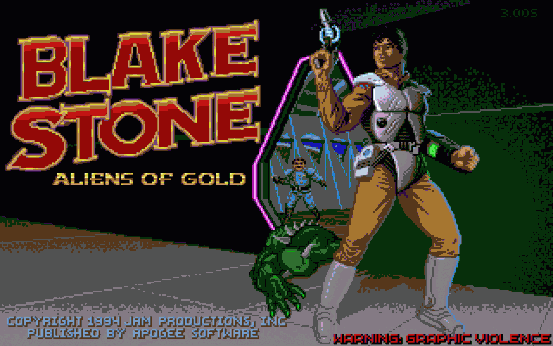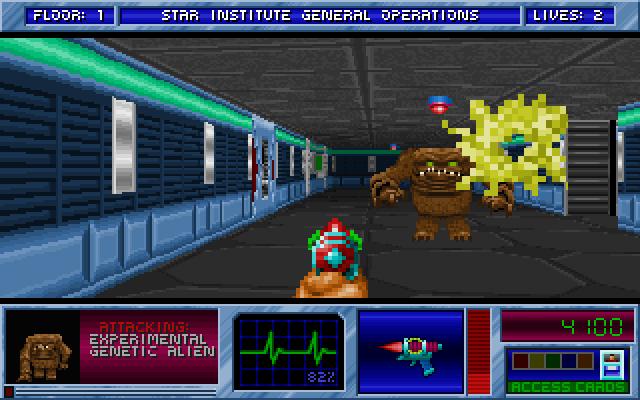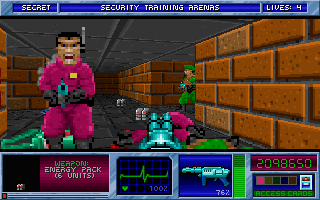
Blake Stone: Aliens of Gold
Blake Stone: Aliens of Gold may go down in the annals of gaming history as one of the most-ill timed releases to ever occur. On December 3rd 1993, Apogee would publish Jam Productions’ Blake Stone. The following week, on December 10th, ID Software’s juggernaut DOOM would be released to the world. If we look back on the history of both games, they would seem forever destined to collide.
In 1990, the company Softdisk Publishing employed the original members of both the Jam Productions and ID Software development teams. That year, John Carmack and John Romero’s company ID Software, who prototyped their games on Softdisk’s computers during weekends, were hired by Apogee to work on the Commander Keen series, and would go on to create Wolfenstein 3D two years later.
After the success of Wolfenstein 3D, Apogee began to look for an additional studio to create more FPS games utilizing the Wolfenstein engine. John Romero, whose ID Software team was now finishing their game Spear of Destiny, a prequel to Wolfenstein, suggested Jim Row and Mike Maynard of Jam Productions, who he used to work with at Softdisk Publishing. It was also during this time that John Carmack was putting the finishing touches on the prototype of what would become the DOOM engine.
But enough of the history for now, what about the game itself? How does Blake Stone: Aliens of Gold hold its place in gaming history? Surprisingly, even with the inevitable parallels drawn between it and DOOM, it’s still pretty good. More-so, the game is revolutionary in terms of the game mechanics it introduces.
You are military agent Blake Stone, member of the 22nd Century Earth Directorate. Your mission is to stop Dr. Pyrus Goldfire, who’s found a way to duplicate gold, which he uses to fund his legion of militants, mutants, and robots…
First and foremost, Blake Stone: AoG is the first to introduce NPC’s (non-player characters) to the realm of 3D gaming. You could no longer just run into a room blasting, as there were now characters within the game willing to help you out on your mission. Throughout the game, you are met by Bio-Technicians, some of which are informants, some of which are not. The informants however regularly give you tips (such as telling you that your charge-up pistol is silent), provide you with ammo, and give you food tokens (which can be redeemed for health at vending machines).
The AI enemies within the game are also given a strategic intellegence, as the will regularly take the ammo lying about as the do combat with you, in an effort to re-arm themselves, and make sure you run out of ammo. They will also attempt to retreat if you’re overpowering them, often running for cover or searching for reinforcements!
Traditional FPS linearity was also challenged within the game for the first time as well. With each level progressing through the use of an elevator, one could always go back down to the floors they had previously unlocked. In some cases, this was necessary, as the switches to unlock hidden rooms were only found on the floors above.
In terms of length, the game is quite rewarding. Broken into six episodes, each contains eleven levels (nine regular and two hidden), for a whopping 66 playable levels. The enemies within the game are also quite varied (20+ throughout the game), and the weapons and setting bristle with a retro-futuristic appeal.
Overall, Blake Stone is a fun game which has the unfortunate position of being released the week before DOOM. If you’re a fan of early FPS games, or simply interested to see how the genre has evolved, I recommend you pick it up (you can find it over at GoG.com).
Oh, and did I mention the manual comes with a comic which serves an opening to the game?

